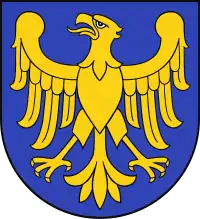Żory
Żory ([ˈʐɔrɨ]; German: Sohrau) is a town and city county in Silesian Voivodeship, Poland with 62,462 inhabitants (2019). Previously it was in Katowice Voivodeship (1975–1998). It is located in the historic Upper Silesia region about 30 kilometres (19 mi) southwest of Katowice.
Żory | |
|---|---|
 Market place (rynek) | |
 Flag 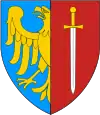 Coat of arms | |
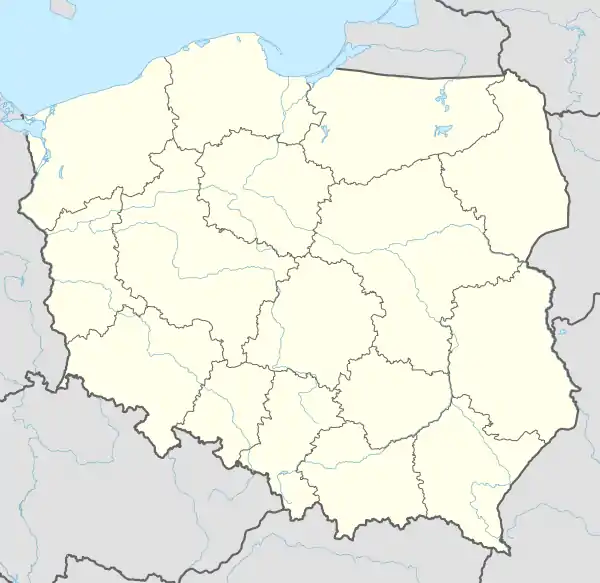 Żory 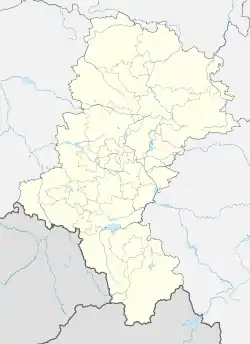 Żory | |
| Coordinates: 50°3′N 18°42′E | |
| Country | |
| Voivodeship | Silesian |
| County | city county |
| First mentioned | 1258 |
| Town rights | 1272 |
| Government | |
| • Mayor | Waldemar Socha |
| Area | |
| • City | 64.64 km2 (24.96 sq mi) |
| Population (2019-06-30[1]) | |
| • City | 62,462 |
| • Density | 970/km2 (2,500/sq mi) |
| • Metro | 659,000 |
| Time zone | UTC+1 (CET) |
| • Summer (DST) | UTC+2 (CEST) |
| Postal code | 44-240 |
| Area code(s) | +48 32 |
| Car plates | SZO |
| Website | www |
History

The settlement on the road from Cieszyn to Kraków was first mentioned in a 1258 deed, when it was part of fragmented Piast-ruled Poland. Żory is one of the oldest towns in Silesia, it was granted city rights according to Magdeburg Law on 24 February 1272 by Duke Władysław of Opole. It remained part of the Upper Silesian Duchy of Opole, since 1327 a Bohemian fief, until in 1532 it was incorporated into the Lands of the Bohemian Crown. In 1645 along with the Duchy of Opole and Racibórz it returned to Poland under the House of Vasa, and in 1666 it fell back to Bohemia. After the First Silesian War it was annexed by Prussia in 1742, and from 1871 it was part of Germany. After World War II, in 1918, Poland regained independence, and upon the 1921 Upper Silesia plebiscite, Żory passed to the Second Polish Republic, and was administratively part of the Silesian Voivodeship, though 69.4% of the citizens had voted for Germany.
In the 18th century it was centre of cloth manufacturing, later of metal and machining industry. Żory was the site of a battle between Poles and the invading Germans on the first day of World War II, September 1, 1939. Afterwards it was occupied by Nazi Germany. From 1942 to 1945, the Germans operated a Polenlager forced labour camp for Poles in the city.[2][3] Among its prisoners were children whose parents were either arrested or deported to Germany.[2] Poles expelled in 1942 from several villages and the town of Szczyrk were also temporarily held in the camp before deportation to forced labour to Germany.[4] In the final stages of the war, in January 1945, the Germans murdered 40 prisoners of the Auschwitz concentration camp in the city during a death march.[5] The city was conquered by Soviet and Czechoslovak troops in March 1945, the German population was expelled, and the city was restored to Poland.
Districts
The town is subdivided into 15 districts.[6]
- Śródmieście
- Pawlikowskiego
- Zachód
- Kleszczówka
- Powstańców Śląskich
- 700-lecia
- Korfantego
- Księcia Władysława
- Sikorskiego
- Rój
- Rogoźna
- Baranowice
- Osiny
- Rowień-Folwarki
- Kleszczów
Education

- Górnośląska Wyższa Szkoła Handlowa im. Wojciecha Korfantego in Katowice – Branch in Żory (Wydział zamiejscowy w Żorach)
- Silesian University of Technology - Branch in Żory
Sport
- Pogoń 1922 Żory – women's handball team playing in Polish Ekstraklasa Women's Handball League
Notable people
- Otto Stern (1888–1969), physicist and Nobel laureate
- Jerzy Makula (born 1952), pilot, two times European Glider Aerobatic Champion and six times World Glider Aerobatic Champion
- Stanisław Sojka (born 1959), jazz and pop singer-songwriter
- Ewa Swoboda (born 1997), sprinter
Twin towns – sister cities
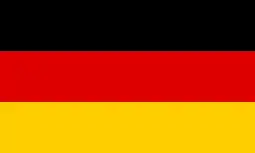 Kamp-Lintfort, Germany
Kamp-Lintfort, Germany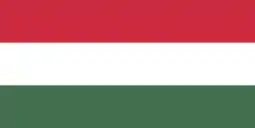 Mezőkövesd, Hungary
Mezőkövesd, Hungary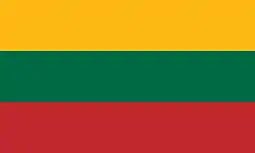 Pasvalys, Lithuania
Pasvalys, Lithuania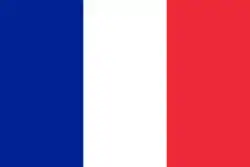 Montceau-les-Mines, France
Montceau-les-Mines, France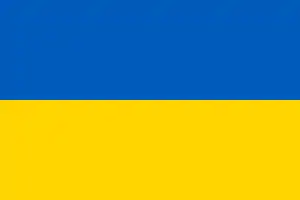 Tetiiv, Ukraine
Tetiiv, Ukraine
References
- "Population. Size and structure and vital statistics in Poland by territorial divison in 2019. As of 30th June". stat.gov.pl. Statistics Poland. 2019-10-15. Retrieved 2020-02-14.
- Maria Wardzyńska, Wysiedlenia ludności polskiej z okupowanych ziem polskich włączonych do III Rzeszy w latach 1939-1945, IPN, Warszawa, 2017, p. 448 (in Polish)
- "Polenlager Sohrau". Bundesarchiv.de (in German). Retrieved 4 October 2020.
- Wardzyńska, p. 452-453
- "Szlakiem Marszów Śmierci". Miejsce Pamięci i Muzeum Auschwitz-Birkenau (in Polish). Retrieved 4 October 2020.
- "Dzielnice Żor" (in Polish). Retrieved 2015-05-06.
- "Miasta partnerskie". zory.pl (in Polish). Żory. Retrieved 2020-03-11.
External links
| Wikimedia Commons has media related to Żory. |
- Jewish Community in Żory on Virtual Shtetl
